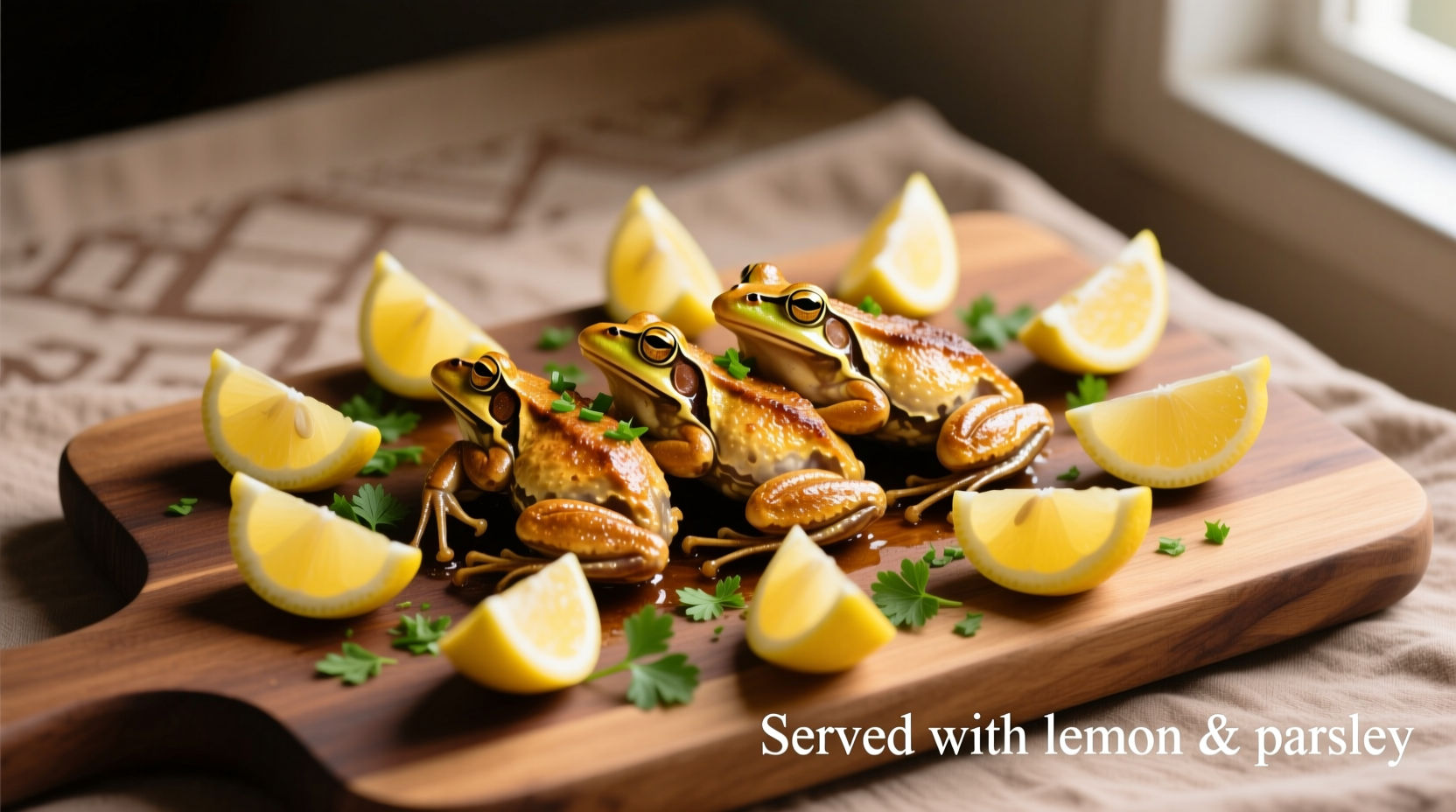Your Complete Guide to Perfectly Cooked Frog Legs
Many home cooks feel intimidated by frog legs, but they're actually one of the simplest gourmet proteins to prepare. With the right technique, you'll discover why chefs worldwide prize these delicate morsels that taste remarkably like chicken with a subtle seafood essence. This guide walks you through every step from selection to plating, ensuring restaurant-quality results in your own kitchen.
Understanding Frog Legs: What You Need to Know Before Cooking
Frog legs have been enjoyed across cultures for centuries—from French bistros to Chinese banquet halls and Southern US kitchens. The edible portion comes from the hind legs, which resemble small chicken wings in both texture and mild flavor profile.
| Characteristic | Frog Legs | Chicken Wings |
|---|---|---|
| Texture | Tender, delicate | Firmer, more substantial |
| Flavor Profile | Mild, slightly sweet with seafood notes | Distinct poultry flavor |
| Cooking Time | 3-5 minutes per side | 20-25 minutes |
| Best Cooking Methods | Frying, grilling, sautéing | Baking, frying, grilling |
When sourcing frog legs, look for sustainably harvested options from reputable suppliers. Most commercial frog legs come from farm-raised bullfrogs, which ensures consistent quality and reduces environmental impact compared to wild-caught varieties. The U.S. Food and Drug Administration confirms that properly prepared frog legs from approved sources present no health risks (FDA Seafood Guidelines).
Step-by-Step Preparation Process
Proper preparation makes all the difference in achieving tender, flavorful frog legs. Follow this timeline for optimal results:
- Thawing (if frozen): Place sealed package in refrigerator for 24 hours
- Cleaning (15 minutes): Rinse under cold water, removing any membrane
- Soaking (60-120 minutes): Submerge in milk to neutralize any gaminess
- Drying (10 minutes): Pat thoroughly with paper towels—critical for proper browning
- Seasoning (5 minutes): Apply salt, pepper, and chosen spices
The soaking step proves essential for beginners. Milk's lactic acid gently tenderizes the meat while drawing out impurities. Don't skip this step—it transforms potentially rubbery legs into succulent morsels.

Mastering the Cooking Process
Three cooking methods consistently deliver excellent results, each with distinct advantages:
Pan-Frying (Best for Beginners)
Heat 1/2 inch of neutral oil (canola or vegetable) to 350°F (175°C). Dredge legs in seasoned flour, shaking off excess. Fry 3-4 minutes per side until golden brown and reaching 145°F internal temperature. Drain on wire rack—never paper towels—to maintain crispness.
Grilling (For Smoky Flavor)
Preheat grill to medium-high. Brush legs with oil and season. Grill 2-3 minutes per side. The high heat creates beautiful grill marks while keeping the delicate meat moist. Best for larger legs with more meat.
Sauteing (Restaurant-Style)
Heat butter and oil in skillet over medium-high heat. Cook legs 3 minutes per side, then finish with garlic, lemon juice, and herbs. This method creates a beautiful pan sauce while cooking the legs to perfection.
Regardless of method, never overcrowd the pan—this lowers the oil temperature and causes steaming instead of proper browning. Cook in batches if necessary.
Flavor Pairings and Serving Suggestions
Frog legs' delicate flavor pairs beautifully with bright, acidic elements and aromatic herbs. Consider these traditional combinations:
- French Style: Brown butter, lemon, parsley, and garlic—a classic preparation dating to 12th century French monasteries
- Chinese Style: Black bean sauce, ginger, and scallions—popular in Southern Chinese cuisine
- Southern US Style: Cajun seasoning with remoulade sauce—a staple in Louisiana cooking
Serve immediately after cooking, as frog legs lose their ideal texture quickly. Pair with light sides like steamed asparagus, roasted new potatoes, or a simple green salad. A crisp white wine like Sauvignon Blanc complements the delicate flavor perfectly.
Avoiding Common Mistakes
Even experienced cooks make these errors when preparing frog legs:
- Insufficient drying: Moisture prevents proper browning—pat legs completely dry after soaking
- Incorrect oil temperature: Use a thermometer—below 350°F causes greasiness, above 375°F burns exterior before interior cooks
- Overcooking: They cook quickly—3-4 minutes per side is usually sufficient
- Skipping resting time: Let legs rest 2-3 minutes after cooking for optimal juiciness
Remember that frog legs have less fat than chicken, making them more prone to drying out. The internal temperature should reach exactly 145°F—any higher and they become tough. When in doubt, undercook slightly as residual heat will continue cooking them off-heat.
Storage and Leftover Considerations
Fresh frog legs should be cooked within 1-2 days of purchase. Store in the coldest part of your refrigerator, preferably on ice. Never refreeze previously frozen legs.
Leftovers keep for 2 days refrigerated but rarely maintain their ideal texture when reheated. If you must reheat, use an air fryer at 325°F for 3-4 minutes rather than a microwave, which makes them rubbery.











 浙公网安备
33010002000092号
浙公网安备
33010002000092号 浙B2-20120091-4
浙B2-20120091-4